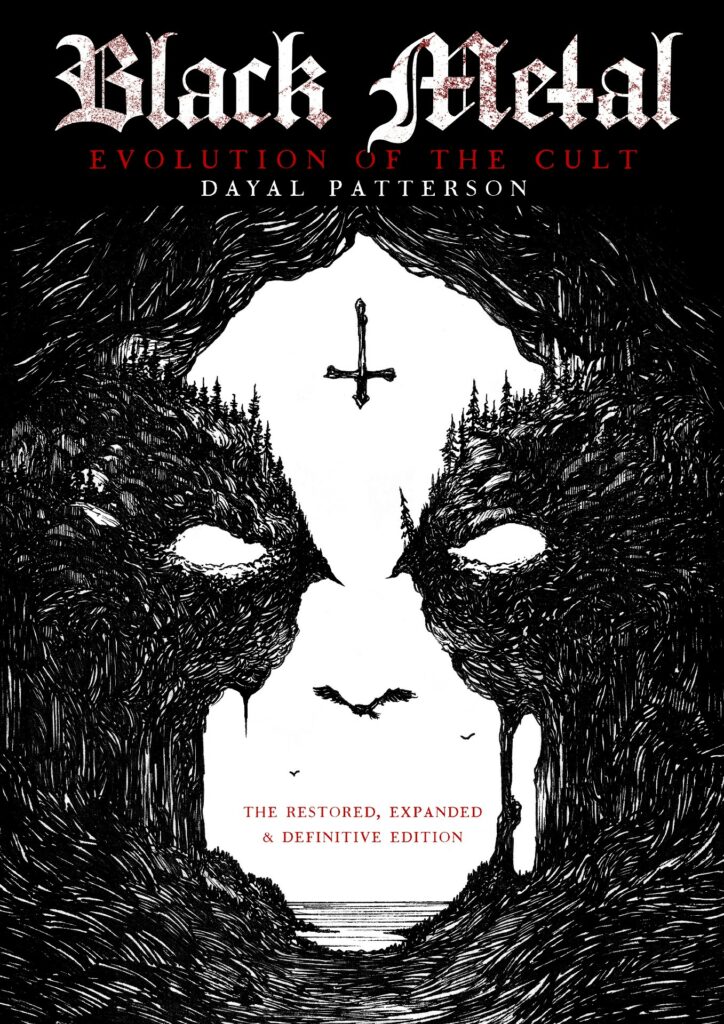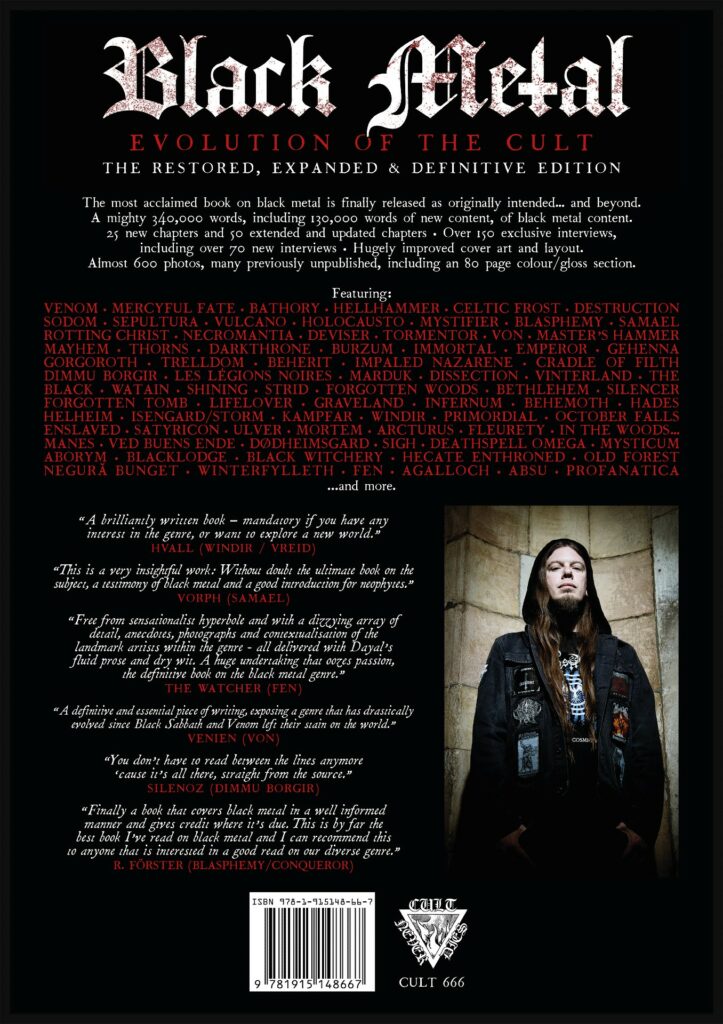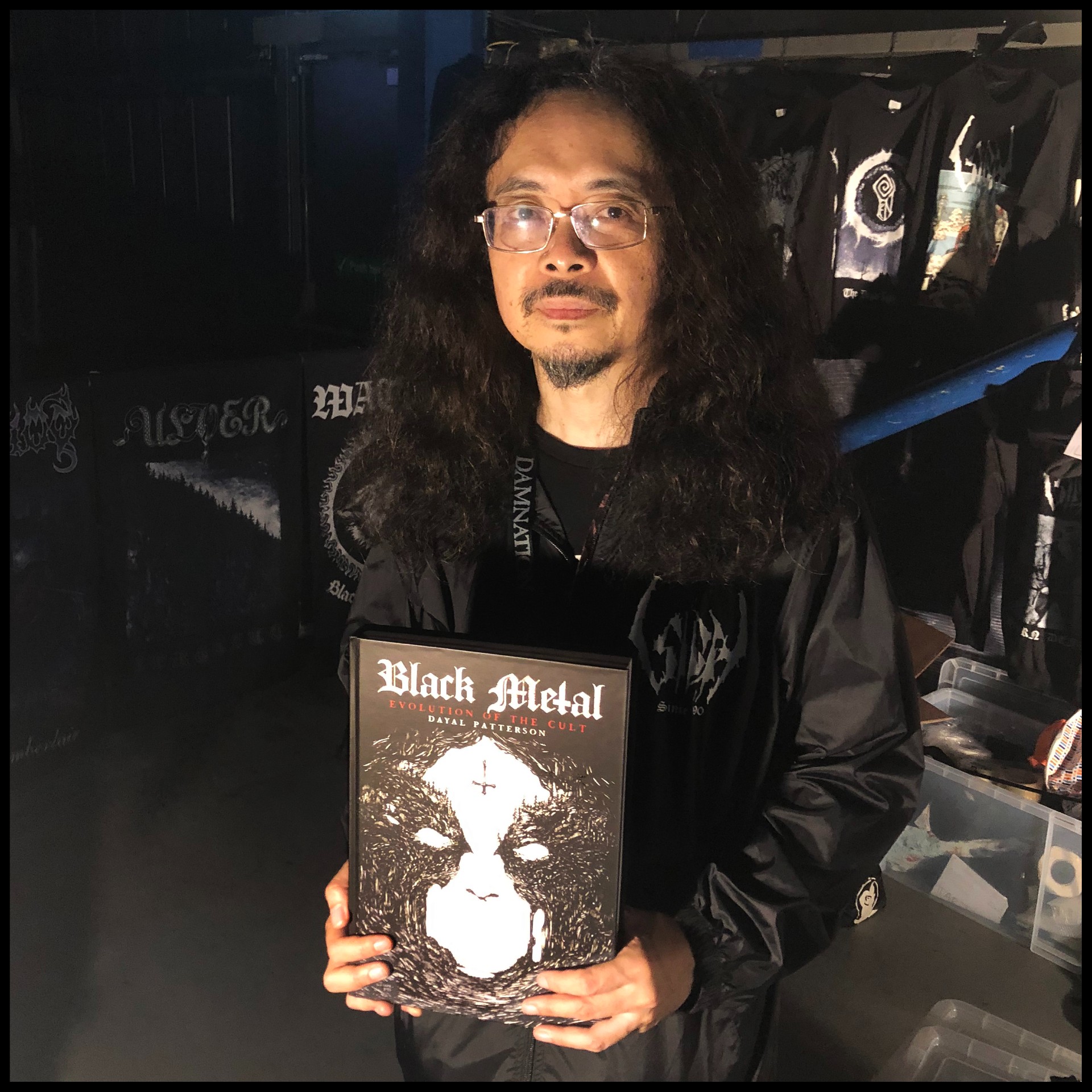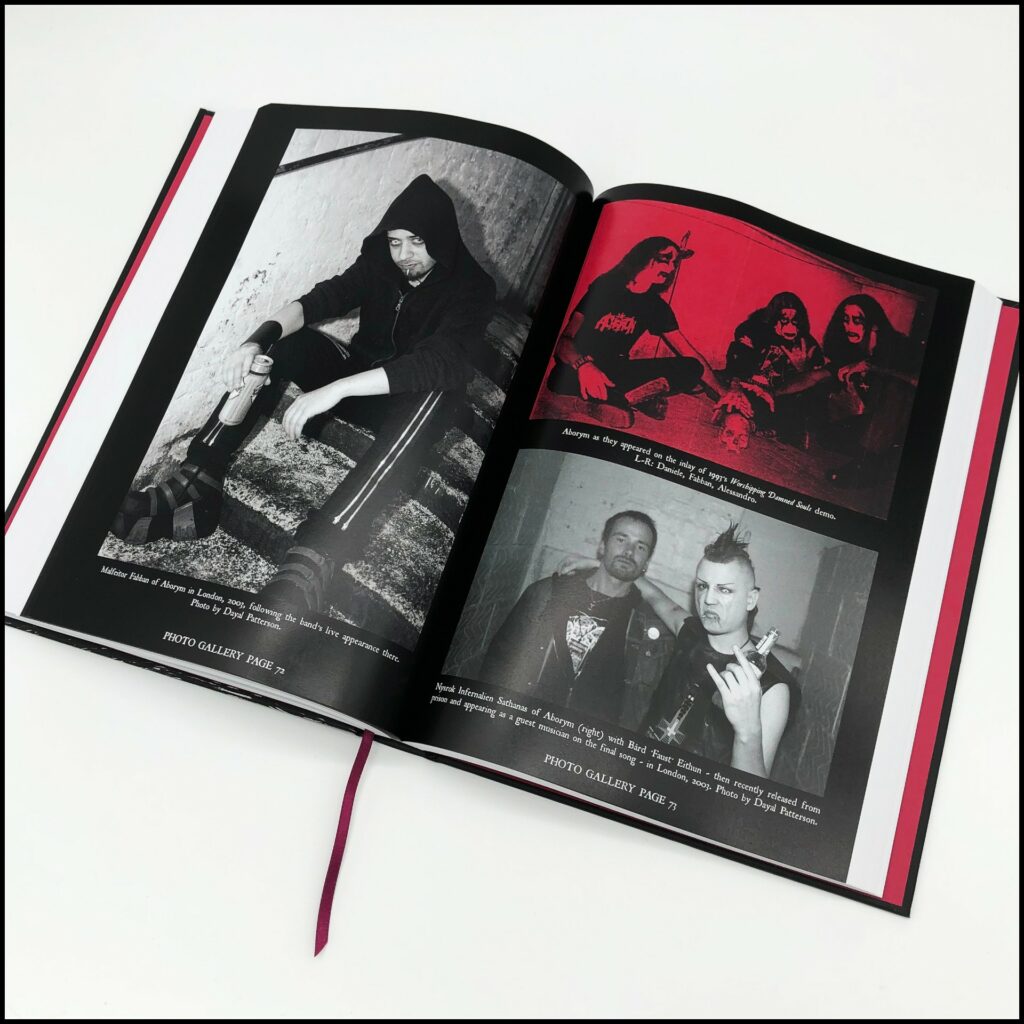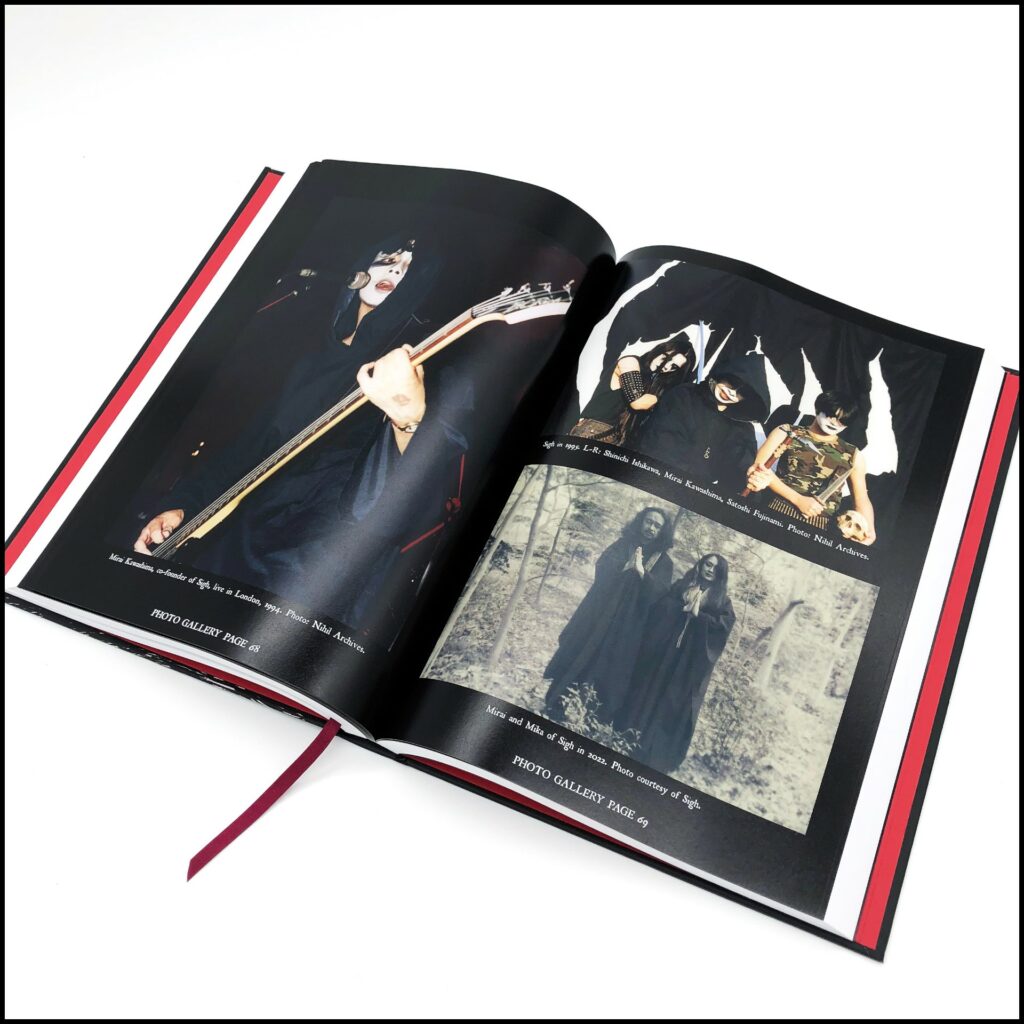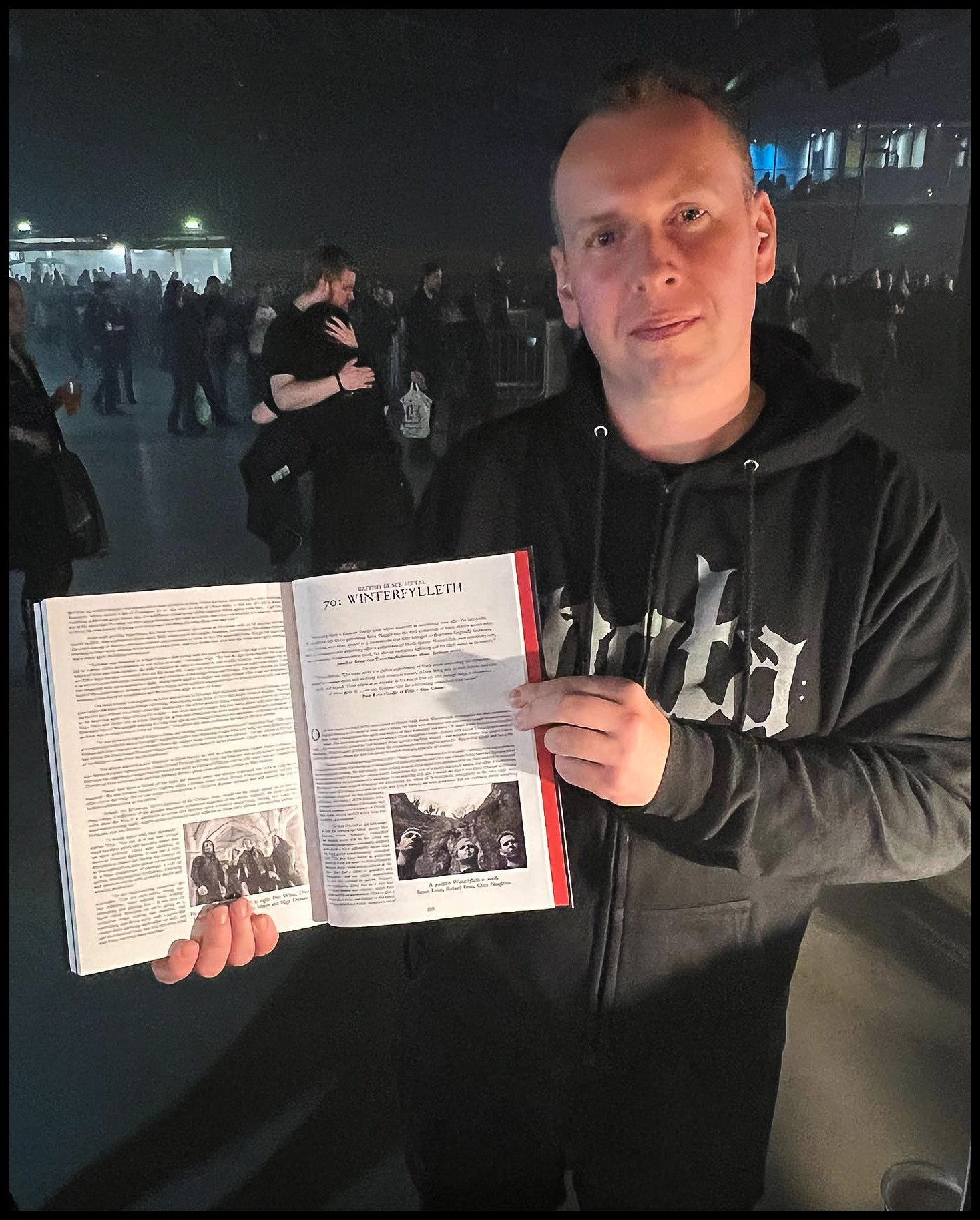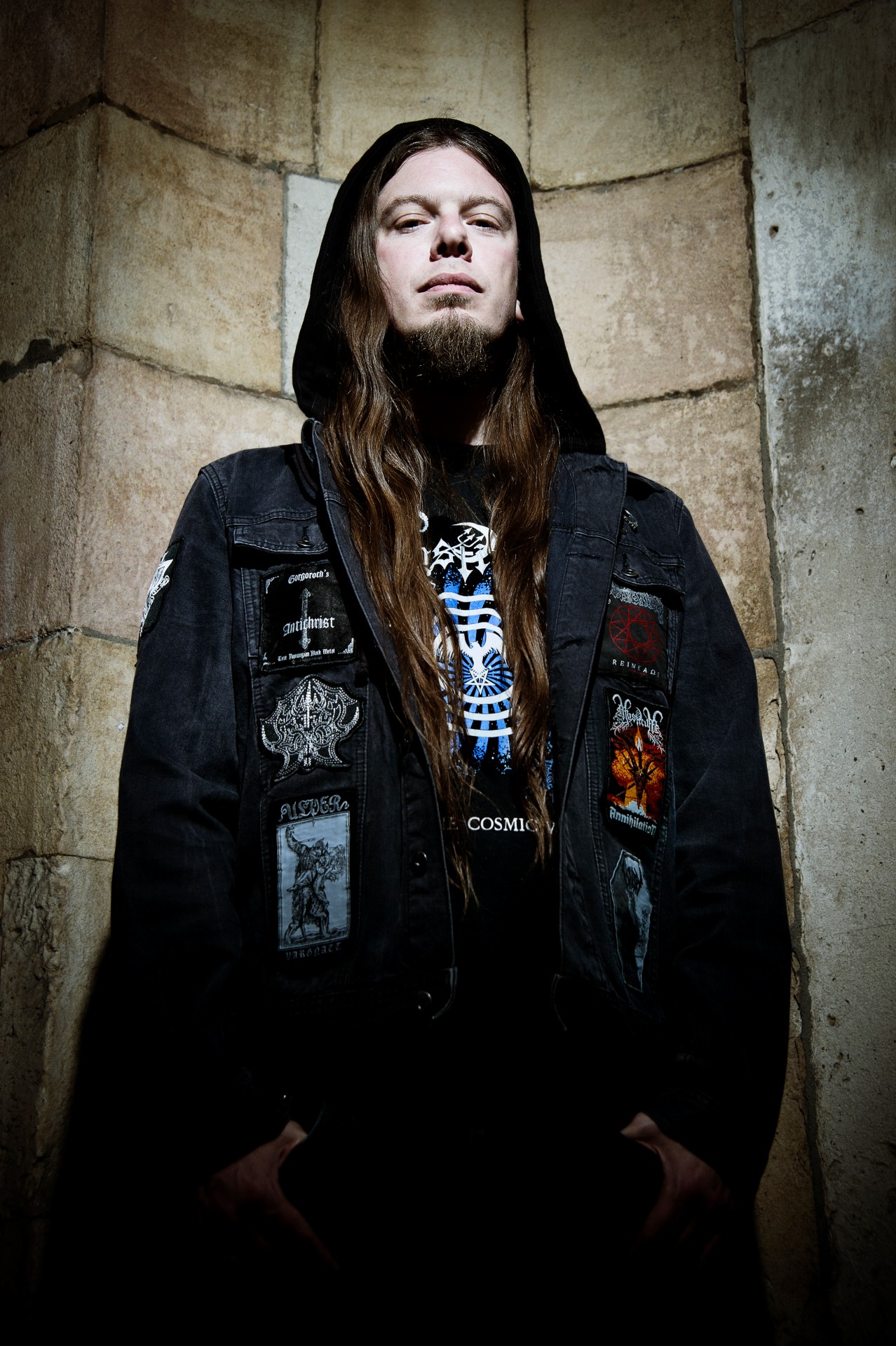Interviews
Dayal Patterson Interview: ‘Black Metal: Evolution of the Cult’ – Restored, Expanded & Definitive Edition
Author and journalist Dayal Patterson talks about the revised and expanded release of his Black Metal encyclopedia, ‘Evolution of the Cult.’
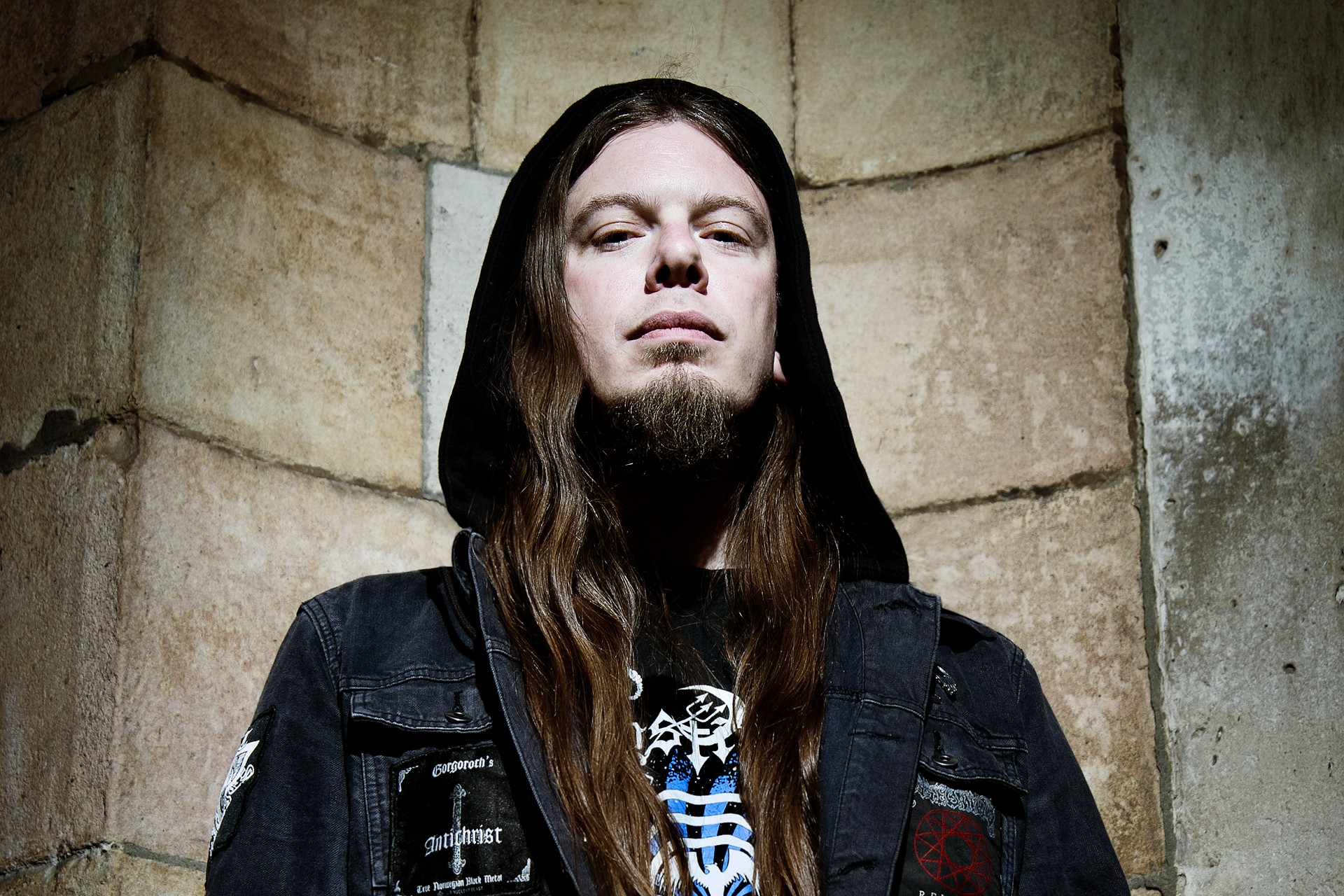
The ever-present spectre of COVID may have prevented an in-person interview with Dayal Patterson, the celebrated rock and metal journalist and author of multiple publications under his Cult Never Dies label-slash-publishing house-slash-store-slash-imprint, following the release of the revised and expanded edition of his grimoire, Black Metal: Evolution of the Cult.
Nevertheless, a textual exchange gathered additional information surrounding this must-have primer to what is, in my entirely biased opinion, one of the most exciting genres in contemporary metal…
That said, I put ten questions to Dayal and, as expected, ten considered answers.
As the proud owner of signed copy #962 of the original Feral print of your book, I was admittedly a little shocked that you had such an extensively revised version, not being party to the limitations placed on you by your first publisher. Of all the new and extended material, what would you say adds the most value to the new edition?
Dayal Patterson: “Ah that’s great, I’d actually forgotten that I numbered the first thousand or so copies. I guess in terms of added value the most significant aspect is the 25 new chapters, and that includes chapters on Immortal, Necromantia, Brazilian black metal, Vinterland, Profanatica, Fen, Mystifier, Winterfylleth, Agalloch, Black Witchery, Satyricon, British black metal, Greek black metal, Arcturus, Hecate Enthroned, Deathspell Omega, Absu and more. The 350 new images (bringing the total number of images to 650) sprinkled throughout the book and improved design are also significant in my opinion, as are the additions and improvements made on the original 50 chapters.”
Even with such an extensive overhaul, is there still any material that didn’t make the cut in this revised edition? And if so, can we expect further companion volumes? It makes publishing seem almost like gaming – ‘buy the base book now and add new content later.’
“No, this is it. There will surely be other books in the series about the subject of black metal (focussing on other scenes like the first two sequels, plus other ‘whole band’ biographies similar to what we did with the Rotting Christ biography) but no more revisions to Evolution of the Cult, this is now the book I wanted it to be from the start. We recently rereleased those two sequels – Black Metal: The Cult Never Dies Volume One from 2015 and Black Metal: Into the Abyss from 2016 – as hardback books, but I didn’t make any changes except for tidying up the layout a little. I don’t think with Cult Never Dies we will ever expand our own books, definitely not the ones in the black metal series – in this case it was only done because the original book was released by another publisher and so I didn’t have the control to release the book as it ‘should’ have been released – as a monstrously sized coffee table book. There was no material that didn’t make the cut this time around – of course, one could dedicate a whole book to, say, Greek black metal, but that would be a different book, and the same goes for other facets of the black metal story I think. Even a book with 340,000 words has to have a start and an end so to speak.”
- “Black Metal: Evolution of the Cult” by Dayal Patterson, front cover
- “Black Metal: Evolution of the Cult” by Dayal Patterson, back cover
You’ve probably done a fair share of press for the new release of your book already, so I’ll try not to ask any ‘obvious’ questions. As an interviewer yourself, having the tables turned and being the interviewee may be uncomfortable – but it may also be insightful. Have you ever been asked something in an interview that has completely stumped you?
“I’ve definitely been asked things that made me pause to reconsider aspects of what I’m doing and the process is definitely challenging in the sense it introduces perspectives from outside of my own bubble. Actually this time there was more of a collaborative element to the book than first time around because six other members of Cult Never Dies team were involved in editing and offering feedback, which was definitely extremely helpful because although the book is certainly based on my outlook to some extent, it is also seeking to be objective in many regards, and having the perspectives of other people involved in black metal but from slightly different backgrounds is helpful in that sense.”
While on the subject of interviews, you have spoken to just about everyone on the black metal who’s who list. Is there anyone you still have to get to that has been hard to pin down for an interview? Or, alternatively, is there anyone still on your interview wishlist?
“There was no one significant that I was unable to get this time around really – it would have been nice to have the guys from Sarcófago but I can’t think of anyone else that would have been important to this particular book. I have to say it was infinitely easier to reach people for this edition than it was when I wrote the original, and that was part of the reason that I could write 140,000 words in one year, whereas the original 200,000 words took some three years (another factor of course was that I was working fulltime on it this time around). Social media can be a curse of course, but being able to drop a quick message or call someone to ask something or fact-check was amazingly helpful, rather than having to send off an email and wait for a reply. Social media existed back then too, but I didn’t really have a relationship with a lot of the people involved and worse still, I had to get people to imagine how the final book was going to be. This time round, almost everyone had read or at least seen the original book, and in some cases approached me before I could approach them.”
Page 413 is the one that made me laugh the hardest, with the Myrkur caption, “The future of black metal is here. Well, no, obviously not.” As something of a black metal purist, I often do find it difficult to take all the sub-sub-genres and offshoots seriously, but one relatively new trend in black metal I’d like your take on is anonymity. Corpse paint and spikes were undeniably emblematic of one phase of black metal, but the new movement – seen in Mgła, Uada, The Committee, Gaerea, Kanonenfieber and more – towards black faceless shrouds is one I find intriguing (and symbolic) on many levels. What do you think about this visual accompaniment to the music of our people?
“I’m quite bored of this trend to be honest – I thought it was quite effective a decade ago when the likes of Mgła started doing it, but now every band with members under the age of 35 seems to feel it’s ‘the thing to do’ and it is very limited in terms of the scope of possible expression, much more limited than corpsepaint (or no corpsepaint). I think the element of anonymity is very relevant of course, but bands like Cult of Fire are very anonymous but have evolved a more interesting and thoughtful aesthetic. And many of those corpsepainted bands were extremely anonymous anyway – it would be almost impossible to recognise the individuals behind most of the famous corpsepainted bands of the 90s and 2000s were it not for external factors.”
Pursuant to the previous question… Obviously, while plugging away at the new revised edition, you’ve probably been immersed in historical black metal and not really paying that much attention to fresh faces in the scene. That said, you do have quotes from relatively young voices – Thomas from Mork, Jeroen from Alkerdeel – so you haven’t exactly been living under a second-wave rock, either. So, are there any bands on your radar to watch out for in the future?
“You hit the nail on the head there – during the last year I haven’t listened to much new music at all because I was so immersed in the subject matter of the book, which of course leans more toward the first three decades of black metal. The only 2023 album I really heard a lot was the one we released, Eloah Burns Out by Iranian/Syrian/English black metal band Trivax (edit: they’re looking for a new guitarist) and I can certainly recommend that record highly. To answer the question though, I definitely don’t want Cult Never Dies to be only backwards-looking and we are active in putting on shows and distributing music by newer bands and include interviews with newer bands online and in our zines, alongside older groups. The children are the future they say, although in black metal’s case, most of the significant ‘children’ are in their late 20s at the youngest.”
- Black Metal: Evolution of the Cult – Aborym photos
- Black Metal: Evolution of the Cult – Sigh photos
In the same breath, a good number of the old guard are still going strong. What are your thoughts on the recent work from the likes of Mayhem, Satyricon or Marduk?
“All still going strong, and the same goes for bands such as Mystifier, Rotting Christ, Dødheimsgard, and even Beherit and Thorns! This is very important I think for black metal, that we have these veteran bands still active, I think having these links between the various generations, these artists whose fanbases cover a lot of age demographics, is essential. Marduk is a good example of a pretty old band that continues to stay fresh and highly active, releasing records regularly and touring all the time, but still reinventing themselves somewhat with each cycle.”
On the other hand, are there any examples of artists you feel could do well with hanging up their leather and nail gauntlets – or could benefit from a fresh injection of inspiration?
“I’ll refrain from naming any offenders here – of course, there are medicore black metal bands out there because there is so much black metal these days, but the bands that we could lose are not the bigger names at the forefront of things, so I don’t think it’s a huge problem. It’s quite easy to avoid bands you don’t like after all.”
As a devout non-supporter of streamers like Spotify (apologies to my v13 family), I couldn’t help but notice that there is no handy link (beyond Instagram and Facebook) to a curated Dayal Patterson playlist anywhere. What are your feelings on music format, personally?
“Personally speaking I don’t use Spotify or any other streaming service, with the exception of YouTube, which I do use to check out new music as well as for non-musical purposes (documentaries etc), and it seems very obvious to me that Spotify in particular is probably the biggest exploiter of musicians going, a hideous and greedy corporation that people support through laziness and convenience. Much like Amazon, which I suspect most of us have used at some point. As much as I think Spotify is a negative thing overall, the bands whose records we have released have mostly wanted to be on that and other streaming platforms and I probably agree with them – in today’s world it is probably the best way to reach people.
“I use digital in the sense that I upload the CDs I buy onto my computer and play them through the computer, likewise when bands send me digital files of their music. But I play vinyl more or less every day, and I’m lucky that I have a job where I can have a turntable beside me on my desk, and I think that is the best way to enjoy music. I don’t want to be overly judgemental, but I deal with people who are serious about music every day and almost all of them have physical collections. If you only stream music I would find it hard to consider you a serious part of the scene, because you aren’t supporting the artists. Sometimes people don’t have the financial means to do that, but then again, even when I was dirt-poor I bought CDs and other items to support the artists. I think if you are going to play digital you should buy the digital files from the band, not least due to the quality and the fact you then own them. Of course, all of this has an element of idealism, but you have to ask yourself at some point, are you serious enough about the metal scene – or whatever music scene you’re into – that you want to preserve and support it, or are you a casual listener who doesn’t really care?”
Last one. Your working relationship with the French artist David Thiérée is, as something of a visual artist myself (and a collector of his work), one that speaks to me. You’ve already published his Owls, Trolls and Dead King’s Skulls collection. Are there any other artists you’re planning to do the same for in the future?
“Absolutely! Coincidentally the one that is confirmed is another well-known Frenchman, namely Christophe Moyen, that book is somewhat overdue and I’m looking forward to seeing that one in physical form. This is definitely an area we will slowly expand as the time and opportunity becomes available.”
Evolution of the Cult is available directly from the publisher as of 22 January 2024.
-

 Music1 week ago
Music1 week agoTake That (w/ Olly Murs) Kick Off Four-Night Leeds Stint with Hit-Laden Spectacular [Photos]
-

 Alternative/Rock2 days ago
Alternative/Rock2 days agoThe V13 Fix #011 w/ Microwave, Full Of Hell, Cold Years and more
-

 Alternative/Rock1 week ago
Alternative/Rock1 week agoThe V13 Fix #010 w/ High on Fire, NOFX, My Dying Bride and more
-

 Features1 week ago
Features1 week agoTour Diary: Gen & The Degenerates Party Their Way Across America
-

 Culture2 weeks ago
Culture2 weeks agoDan Carter & George Miller Chat Foodinati Live, Heavy Metal Charities and Pre-Gig Meals
-

 Music1 week ago
Music1 week agoReclusive Producer Stumbleine Premieres Beat-Driven New Single “Cinderhaze”
-

 Indie2 days ago
Indie2 days agoDeadset Premiere Music Video for Addiction-Inspired “Heavy Eyes” Single
-

 Alternative/Rock2 weeks ago
Alternative/Rock2 weeks agoThree Lefts and a Right Premiere Their Guitar-Driven Single “Lovulator”

